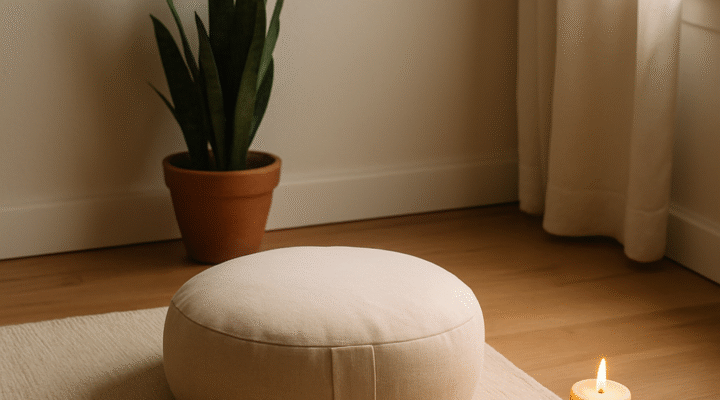
In a world filled with constant distractions and mental overload, meditation offers a quiet, powerful refuge. And contrary to popular belief, you don’t need to sit for hours or clear your mind completely to benefit from it. Just five minutes a day can begin to transform your focus, reduce stress, and improve emotional clarity.
If you’re curious about meditation but unsure where to start, this guide will help you begin gently, effectively, and without pressure.
1. What Is Meditation?
Meditation is the practice of training your attention. It’s not about silencing your thoughts—it’s about noticing them without judgment and returning your focus to the present moment.
There are many types of meditation, but for beginners, mindfulness meditation is a great place to start.
2. Why Just 5 Minutes?
Starting small helps build consistency without feeling overwhelming.
- It’s easier to commit to
- You reduce resistance to starting
- You build a habit gradually
- Even short sessions provide real benefits
Over time, five minutes can naturally expand into longer sessions.
3. The Benefits of Daily Meditation
Even brief daily practice can lead to:
- Reduced stress and anxiety
- Increased emotional regulation
- Improved focus and memory
- Better sleep and energy
- A greater sense of calm and presence
These effects accumulate with consistent practice.
4. How to Start Meditating in 5 Simple Steps
Step 1: Find a Quiet Spot
Choose a place where you won’t be disturbed for a few minutes. It can be your bed, a chair, a mat on the floor, or even your car (parked, of course).
Step 2: Set a Timer
Start with 5 minutes. You can use a timer on your phone or a meditation app like Insight Timer, Calm, or Headspace.
Step 3: Sit Comfortably
You don’t need to sit cross-legged. Sit in a way that feels relaxed but alert—back straight, hands resting on your lap.
Step 4: Focus on Your Breath
Gently bring your attention to the rhythm of your breathing.
- Inhale slowly through your nose
- Exhale slowly through your mouth or nose
- Notice the air entering and leaving, the rise and fall of your chest
Step 5: Redirect Gently When Distracted
Your mind will wander—and that’s okay.
- When you notice it, simply acknowledge the thought
- Gently bring your attention back to your breath
- The act of returning is the practice
5. Tips to Stay Consistent
- Meditate at the same time each day (morning or before bed)
- Keep a meditation journal to reflect on how you feel after each session
- Use soft background music or ambient sounds if silence feels too intense
- Don’t judge your performance—showing up is success
6. Use Guided Meditations if Needed
For beginners, guided sessions can be very helpful.
- Apps like Insight Timer, Calm, and Headspace offer free content
- Look for short sessions labeled “beginner,” “5-minute meditation,” or “morning calm”
- Audio guidance can keep you centered and make the process feel more accessible
7. Listen to Your Body and Mind
Some days will be easier than others. That’s part of the process.
- If you feel restless, reduce the session time—but don’t skip it
- If your mind feels noisy, know that meditation isn’t about silencing—it’s about observing
- Trust the cumulative power of regular practice
8. Make It Enjoyable
The more pleasant the habit, the easier it is to maintain.
- Use soft lighting or a candle
- Keep a cozy blanket or cushion nearby
- End each session by stretching or writing a short gratitude note
9. Reflect on the Impact
Notice how meditation affects your day-to-day life.
- Do you feel calmer in traffic?
- Are you less reactive in stressful moments?
- Is your sleep improving?
- These subtle shifts are signs of deep inner work
Start Simple, Stay Present
You don’t need to meditate perfectly. You just need to begin—today, for five minutes. This small commitment is a doorway to a calmer, more present, more empowered version of yourself.
Meditation is not about escaping the mind, but about understanding it. And that understanding can change your entire relationship with yourself and the world around you.



Deixe um comentário